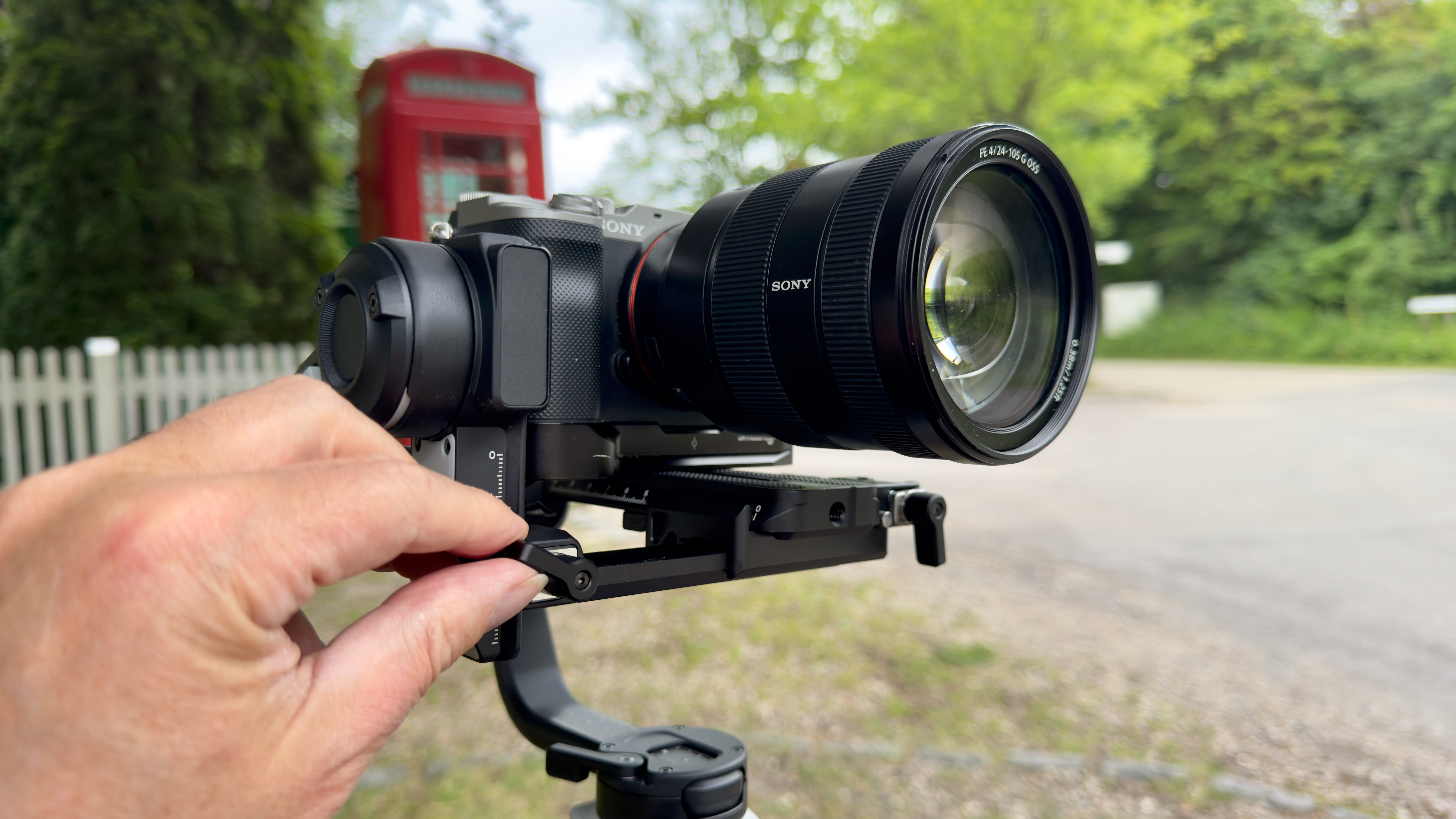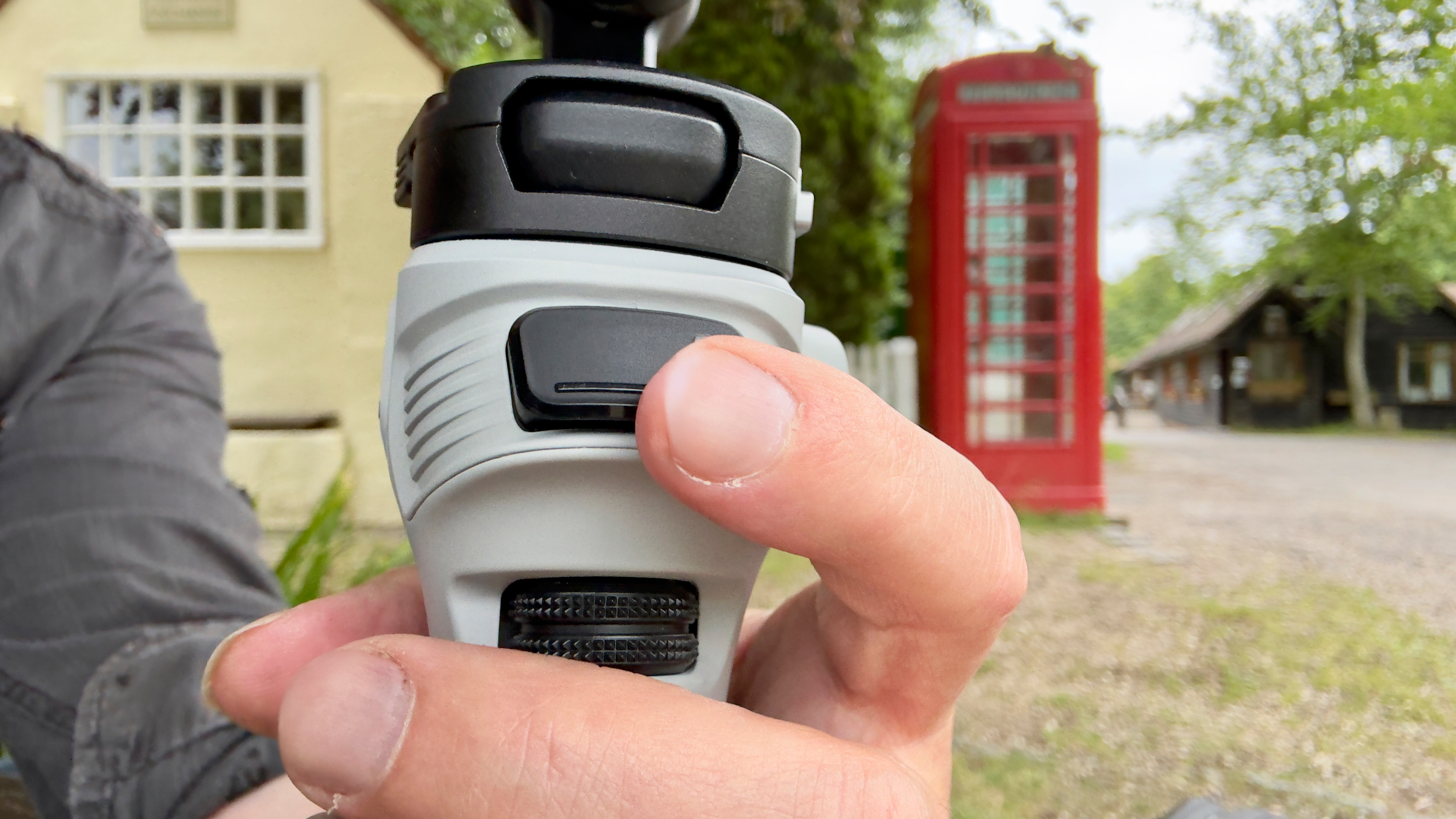
Released in 2024, the Cinepeer Weebill 3E is the latest camera stabilizer in Zhiyun’s Weebill range. I tested and reviewed the older Weebill 3S back in June 2022. The range presumably takes the name ‘Weebill’ from the smallest bird species in Australia and like its namesake, the Cinepeer Weebill 3E is compact but highly maneuverable.
Despite its relatively small stature - Zhiyun compares its profile to a sheet of A4 paper - the Weebill 3E is a powerful heavy lifter. It can carry a full-frame camera and lens combination up to a weight of 3kg. However, I got the payload information from Amazon as Zhiyun doesn’t make it easy to find that particular specification information on their site for whatever reason. A capable gimbal, with lots of features, a heavy payload, and a decent price, it sets the Weebill 3E up as potentially one of the best gimbals and stabilizers for DSLR and mirrorless cameras.

Cinepeer Weebill 3E: Specifications
Cinepeer Weebill 3E: Design & Handling
Unlike its jet-black Weebill 3S predecessor the Weebill Cinepeer 3E is constructed from a light grey plastic body with metal axis arms to support a heavy payload. Although it’s a newer release in the Weebill range, the Weebill Cinepeer 3E lacks the built-in fill light and microphone of its Weebill 3S predecessor. Interestingly the space where the fill-light used to be is still visible as part of the design but is filled in with plastic.
The Cinepeer is also down to one USB-C camera control port (instead of the Weebill 3S’s two ports). However, as the Cinepeer Weebill 3E can connect and control camera functions via Bluetooth the loss of one camera control port isn’t crucial. We plugged the supplied USB-C cable into the Cinepper’s remaining camera control port and we were able to start/stop recording on our Sony Alpha 7C’s by pressing the dedicated Record button on the gimbal’s shaft. The lack of some of the older Weebill 3S' features in the newer model is reflected in the Weebill Cinepeer 3E’s cheaper price.


A key design feature of the Weebill Cinepeer 3E is its support for Sling Mode 2.5. This enables you to attach a Zhiyun MasterMove sling handle sling to the gimbal. The sling handle (with its adjustable wrist rest that spreads the weight of the gimbal and payload) makes it easier to capture low-angle tracking shots.
But here’s the downside - the basic Cinepeer Weebill 3E kit doesn’t ship with the MasterMove sling handle. That essential accessory will add $/£139 to the cost of the Cinepeer Weebill 3E. I say ‘essential’ because there’s a lot of wrist strain to endure if you support the gimbal with one hand. I’ll go into more detail about that issue in the Performance section.

As with most gimbals, there’s a physical mode button on the rear of the handle that you can tap to change between modes such as F (Follow), PF (Pan Follow), and L (Lock). You can view the chosen mode on the Weebill 3E’s 0.96-inch OLED screen.
When you expand the mini tripod you can rest the gimbal on a flat surface and use the joystick to perform smooth pans and tilts. The speed of the moves can be varied depending on how far you use the joystick which is useful for slow atmospheric pans or faster moves to keep up with a moving bus for example.
You can also assign a shortcut to the trigger at the front of the gimbal to toggle between modes. The adjustment wheel enables you to tweak the tilt of particular axes or you can set it to control camera properties such as ISO.
Cinepeer Weebill 3E: Performance
To test the Cinepeer Weebill 3E I drove to the Amberley Heritage Museum in England’s county of Sussex. The museum featured a vintage bus that drove around in a circular route. This made it easy for me to film the attractive old vehicle from different angles using a range of stabilizer-assisted camera moves. I could then cut the various tracking, moving, panning, and craning shots together into a seamless sequence (as you’ll see at the end of my supporting video).
I popped a Sony Alpha A7C and a -105mm Sony lens on the Weebill 3E. The payload weighed 1.274 KG and the gimbal itself was just over a Kilo, so the combined weight was 2.284 KG. This doesn’t sound like a lot but maneuvering this weight with one hand put a lot of strain on my wrist and even caused it to shake on occasion. Zhiyun states that the MasterMove sling handle accessory reduces wrist fatigue by 40%, so it’s well worth considering a purchase of one. I didn’t have a MasterMove sling on my test shoot but
by holding the gimbal in one hand and the supplied mini tripod with my other hand I was able to extend the length of the gimbal and spread its weight between both arms. This made it easier and more comfortable to maneuver.

With a heavy payload, you need to balance a DSLR gimbal. As this was my 18th gimbal test for Digital Camera World I’d become aufait with the art of balancing the tilt, pan, and roll axes so that there was less strain on them (and therefore gimbal better performance and longer battery life). The locking and unlocking knobs on each axis were easy to operate, though the tilt axis was a little stiff when I tried to slide the payload into the optimum balanced position. Unlike the DJI RS4 and the RS4 Pro the axes don’t lock and unlock automatically, so occasionally the gimbal would flash up a lock warning on its OLED screen. I’d then have to find and unlock the relevant axis before I could use the Weebill, which could cause me to miss a shot.
I balanced the camera with the lens set to 24mm so that I could capture the widest angle of my subject. When I decided to shoot the approaching bus from a distance I changed the lens to 105mm. However, by extending the lens the payload became unbalanced and the gimbal shot down to protect its motors. This caused me to miss the shot though as the bus was on a circular route I was able to re-balance the gimbal and get the shot later! When testing smartphone gimbals I can move and shoot more quickly. My iPhone 15 Pro Max can switch from an optical 13mm to 120mm without requiring a gimbal rebalance, which is why I prefer shooting video these days on a lighter smartphone rig.

The physical Mode button enabled me to switch to F (Follow). In this mode, the camera would both tilt and pan depending on my wrist movement. For most of the shoot, I stayed in PF (Pan Follow) mode. This enabled the camera to pan but it wouldn’t tilt up or down. This was perfect for craning up from a low to a high angle as the bus approached during my test shoot. The cable-linked record button was useful in triggering a recording on the Sony Alpha A7C, though sometimes I had to press it a couple of times to make the camera beep and start recording.
As you’ll see from the montage at the end of my supping video I was able to make a heavy camera and long lens float smoothly through a range of tilts, pans, tracking shots, and cranes and I enjoyed using Weebill 3E. It was also useful when mounted on its tripod to capture smooth pans via the joystick.
Cinepeer Weebill 3E: Verdict
If you’ve got a heavy DSLR and want to free it from the limited pans and tilts of a static tripod then the Weebill Cinepeer 3E will give you complete freedom of movement, though we highly recommend the additional purchase of the Zhiyun MasterMove sling arm to help alleviate wrist strain and make complex camera moves (such as cranes) easier to perform. During our test, there was no axis juddering or shaking due to strain on the motors which should give you confidence that this heavy lifter can take the strain of a full-frame camera and long lens. The Weebill 3E lacks some of the features of the older Weebill 3S, but do you really need a fill light and built-in mic in a gimbal?

✅ Buy it...
- You have a heavy payload to manoeuvre
- You need Bluetooth or cable camera control
- You need variable joystick speeds
🚫 Don't buy it...
- You need to switch often between wide-angle and close-up lens settings
- If you need a gimbal supplied with sling arm







